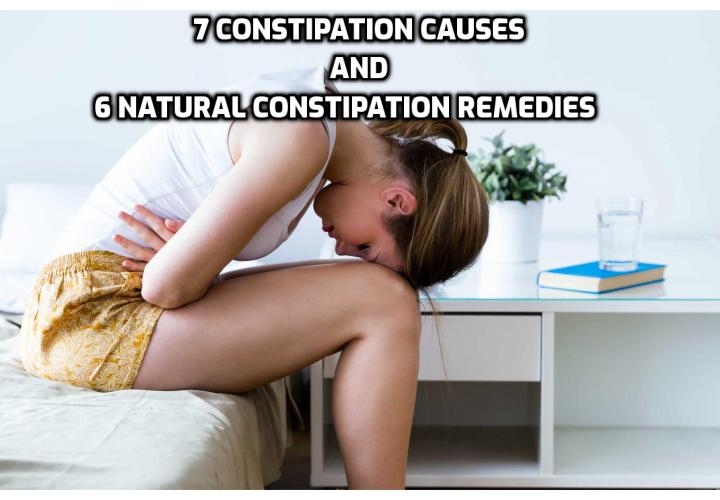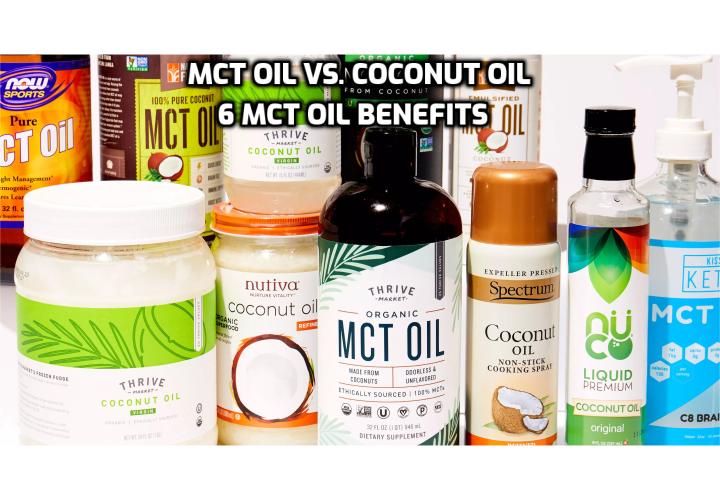Click HERE to Discover these 80 Keto-Friendly and Healthy Slow Cooker Recipes
7 Constipation Causes You CAN’T Ignore (and 6 Natural Remedies)
Having trouble pooping? You might be surprised that the cure for constipation can be found in your kitchen. Let’s talk about the most common causes and all natural home remedies for your constipation.
If you’ve ever heard the myth that girls don’t poop, your bubble is about to burst. For a lot of people, going poop is something done in secrecy. There are even specially-made air fresheners on the market to disguise your porcelain presents.
It’s definitely not an ideal dinner table topic and it may seem super embarrassing to even think about discussing your poo with others. But believe it or not, this natural bodily function is something that a surprising amount of people struggle with on a daily basis.
What is Constipation?
Constipation is what can happen in between the time food goes from plate to bowl (toilet bowl, that is). Though you don’t need to check yourself into a hospital every time you get constipated (it’s not considered a disease), it is still a very real symptom to be aware of.
Constipation can turn you into a cranky, bloated version of yourself with a side of a headache, and it may even land you a trip to the doctor’s office. It’s important to learn to read your body and what your bowel movements are trying to tell you about your dietary and lifestyle habits.
During the last stages of digestion, your waste will move into the large intestine, known as your colon. At this point, your body has soaked up all possible nutrients and has left behind a watery and unformed waste mixture.
As the muscles in your colon push the mushy waste closer to the toilet bowl, your colon will absorb excess water and transform the mushy waste back into solid form.
If this process is slowed down, or if too much water gets absorbed, which makes your poo hard, dry, and difficult to pass, you’ll experience constipation.
Number two is something that should happen on a regular basis. Depending on the expert you ask, different recommendations on how often it should happen will be given for different people.
It really just comes down to listening to your body and making sure you’re going in a regular pattern. Having irregular visits to the bathroom for poo time is also a characteristic of constipation.
Getting constipated every now and again is not a big deal – chances are, everyone has experienced it at least once in their lifetime.
Chronic constipation, on the other hand, is something to be concerned about. If you’ve been having irregular poop cycles for several months, you’re chronically constipated and should definitely see a doctor. Don’t let the fear of talking about your poo stop you from going in to see a medical professional.
What Causes Constipation?
1. Poor Diet
Low in fiber, high in fried foods/chips, high in sugar, eating frozen dinners, high amounts of dairy, etc. – Diet is the most common cause of constipation.
2. Dehydration
This is another main cause of constipation. If there isn’t enough water to push your waste through your bowels, it’s literally like trying to push sand through a pipe. Water is going to make the process a whole lot smoother since poo is about 75 percent water and 25 percent solid.
3. Coffee
While coffee can trigger your digestive muscles, drinking too much coffee can make you dehydrated, which may lead to constipation.
4. Medication
Always consult your doctor if you are having issues with constipation and prescribed medications. If you are taking any over-the-counter meds or supplements, you may want to reconsider your intake.
Consult your doctor about them (opiates, narcotics, OTC painkillers like aspirin and ibuprofen, antidepressants, high blood pressure meds, diuretics, antacids like Tums and Alka-Seltzer, and iron and calcium supplements can all be culprits of constipation).
5. Holding in Your Poop
If you have to go, just get to a safe place and make it happen. Delaying your body’s natural function can aggravate your body and cripple its ability to tell you when you need to go in the future. Don’t be embarrassed to go number two in a place other than your home. Everyone’s digested food has to evacuate at some point during the week, if not daily. We’ve all been doing it since birth, and will be doing it for the rest of our lives.
6. Inactivity / Lack of exercise
Exercise is good for your muscles, both inside and out. Movement helps stimulate the natural contraction of intestinal muscles to help pass stools.
7. Pre-existing Medical Conditions
Hypothyroidism, diabetes, depression, inflammatory bowel disease, neurodegenerative disease, autoimmune disease, etc.
Natural Constipation Remedies
Heading to the store to pick up laxatives is like taking the easy way out. While it sounds way easier to just take a pill and have everything magically fixed, in reality it’s not exactly magic.
Laxatives work by irritating the lining of your intestines — they literally cause your colon to spaz out. Unless prescribed, try to avoid using laxatives to help you go number two. Getting hooked on over-the-counter laxatives will train your intestines to get lazy, and you’ll likely have persistent constipation.
1. Eat More Fiber
Fiber is indigestible. Our bodies can’t absorb it. So why do we need to make sure to eat enough of it? Because it is the major key to making the perfect poo.
Fiber adds bulk to your bowel movements. It also makes your poo softer and easier to pass. Hemorrhoids and diverticular disease are both very common digestive problems that will benefit from increasing the amount of fiber in your diet.
According to the American Heart Association, you should get about 25-30 grams of fiber daily.
Have you ever eaten knock-off brand anything and it just wasn’t the same? The same goes for fiber. Make sure that this fiber is from food, not supplements—supplements may work, but they just aren’t as good as the real deal.
Fresh fruits and vegetables have more fiber than their canned counterparts. Vegetable and fruit juices are not the best options for fiber intake either, since fiber is removed for the most part during the juicing process.
These foods are high in fiber:
• Nuts (almonds, pistachios, pecans)
• Flaxseed, sesame seeds
• Prunes (dried plums)
• Figs
• Avocados
• Artichokes
• Brussels sprouts
• Acorn squash
• Chia seeds
2. Drink More Water
Keep your body hydrated. There are a number of reasons to stay hydrated, and having healthy bowel movements is definitely somewhere at the top of the list.
As mentioned earlier, water helps the poo process run smoothly, since your colon will do its best to absorb water to turn your body’s waste from mush to solid.
3. Get Enough Exercise
If you laugh at the thought of exercise, but find yourself having trouble in the bathroom, you should stop laughing and think about changing up your couch potato lifestyle.
According to the 2016 Participation Report released from the Physical Activity Council, about 28 percent of their surveyed population was inactive. They also found that the largest age group found to be inactive were those 65 and older. This is usually the same age group that experiences constipation more frequently.
Though it can be tough to get started, getting into an exercise routine is super important for keeping your bowel movements regular.
It’s never too late to get moving. The more you work out, the more you force your body into absorbing nutrients and circulating blood and oxygen, which will help to stimulate your colon.
Specifically, aerobic exercise, or cardio, is the type of exercise you want to do. This will pump up your breathing as well as your heart rate to get your intestines to naturally contract and help stools pass through quickly.
4. Use a Footstool
Putting your legs up allows your poo to move through a straighter canal, as opposed to angled, which means you’ll have to put forth less effort to part ways with your waste.
You can use any object to give your legs the lift they need, watch this squatty potty video.
5. Try Yoga Poses
Yoga is not only great for making your body look good on the outside, it can also make you feel great on the inside.
Aside from its many mental health benefits, yoga can also help to prevent constipation. There are many poses that can provide some relief to you. Here are a few:
• Wind relieving pose: Lie down on your back so that your spine and tailbone are parallel with the ground. Pull your knee (one at a time) up into your chest. Grab your shin with your hands and draw your leg into your belly.
• Plough pose: Start by laying down on your back. Lift your legs using your ab muscles until your toes touch the ground behind your head. Roll your shoulders underneath you, straighten your arms, and interlace your fingers. Make sure your hips are lifted and in line with your shoulders.
• Child’s pose: Kneel down on your knees and rest your butt on your heels. Bring your forehead to the ground by bending at the hips, and rest your torso on your thighs. You can either actively stretch your arms out in front of you, palms facing down, or rest them down by your sides, palms facing up.
Watch this video – 3 Easy Yoga Moves for Constipation, Bloating & Improved Digestion
6. Eat Fermented Foods
Besides helping form your poo, fiber is necessary to maintain a healthy gut bacteria environment.
Your whole digestive system is loaded with neurons, called your enteric nervous system, and it is often referred to as your second brain. Of course an upset tummy is going to make you feel unhappy, but it’s also possible that the upset tummy is causing your unhappy mood (i.e. the communication is going both ways).
When your gut bacteria environment is unstable, it sends out signals that something isn’t right. Eating fermented foods in addition to fiber can help to replenish healthy gut bacteria.
If yogurt came to mind, think again. Make sure to check the labels on store-bought yogurt. Most are high in sugar and pasteurized, meaning that they have been heated, which actually kills off the health-promoting bacteria. Try these foods instead:
• Sauerkraut
• Kimchi
• Kombucha
• Raw kefir
Written by Liz Lang
Author Bio:
Liz Lang is a Clinical Research Coordinator with the Southern California Institute for Research and Education in the field of Gastroenterology. Liz graduated from the University of California, Irvine with a degree in Public Health Sciences. She has an insatiable thirst to learn how the human body works in order to keep people healthy. When Liz isn’t in the clinic, she enjoys exploring nature, yoga, and trying new things (especially food!).
A lot of people have gotten results from the Keto diet, and enjoyed the foods that it has to offer. However, many of the people who are following this diet have a hard time finding the recipes that they need, especially ones that are quick and easy to complete.
Fortunately, Kelsey Ale, noticed this problem, and decided to do something about it. She’s found that making recipes in a slow cooker gives you meals which are not only delicious, but also take very little time to make. Mostly you just put a few simple ingredients in the slow cooker, and let it do the rest.
To find out more, click on – Keto Slow Cooker Cookbook







